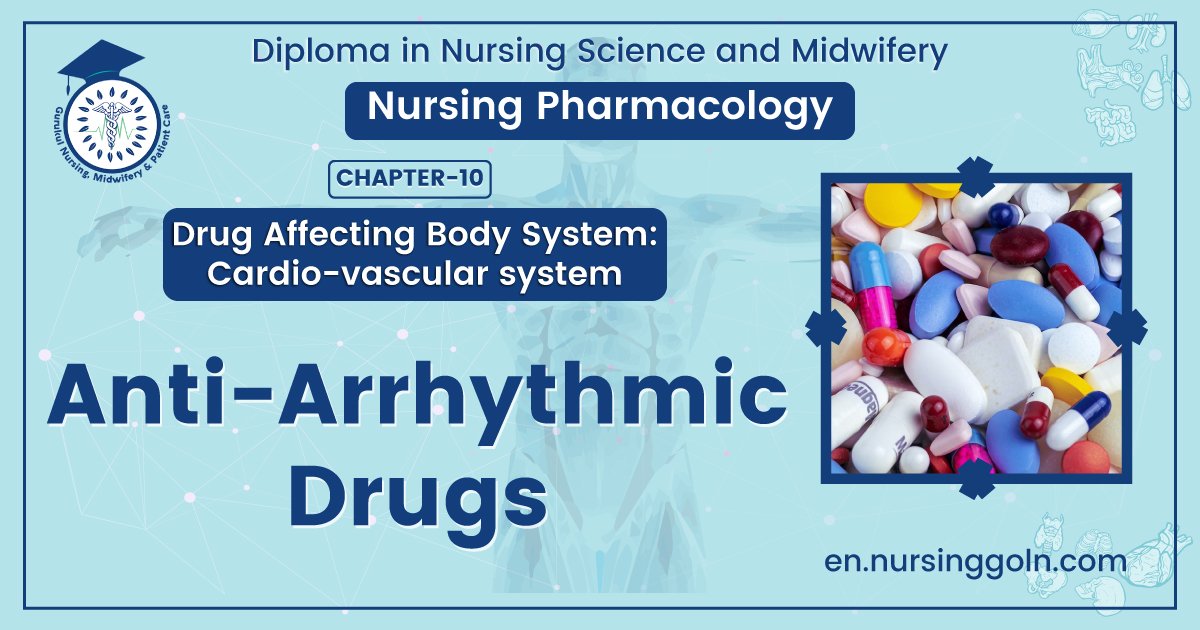Anti-Arrhythmic Drugs – This book covers the entire syllabus of “Pharmacology” prescribed by BNMC- for diploma in nursing science & midwifery students. We tried to accommodate the latest information and topics. This book is an examination setup according to the teachers’ lectures and examination questions.
At the end of the book, previous questions are given. We hope in touch with the book students’ knowledge will be upgraded and flourish. The unique way of presentation may make your reading of the book a pleasurable experience.

Anti-Arrhythmic Drugs
Classification according to electro pharmacological action Vaughan-Williams classification
Class-l drugs: Na+ channel blocker
- Quinidine: Membrane stabilizing action.
- Procainamide Prolongs refractory period.
- Disopyramide Prolongs action potential
- Lidocaine
- Mexiletine: Membrane stabilizing action
- Tocainide Shortens refractory period.deltah
- Phenytoin Shortens action potential.
- Flecainide: Membrane stabilizing action.
- Enchained: No effect on action potential Class-II drugs: B-blockers:

Counteracts catecholamines
- Propranolol: Abolish SA node firing
- Metoprolol: Decrease contractility
- Atenolol, sotalol Increase AV refractoriness.
Class-III drugs: repolarising prolongation
- Amiodarone: Prolongs refractory period.
- Bretylium: Prolongs the action potential Prevents re-entry-rhythm.
Class-IV drugs: Ca++ channel blocker:
- Verapamil: Inhibits slow calcium channels
- Diltiazem: Depress contractility of A-V node
Cardiac Arrhythmia
Disorder in rate and rhythm of cardiac contraction due to myocardial damage is called cardiac arrhythmia. The drugs, which are used in the treatment and prevention of cardiac arrhythmia, are known as anti-
arrhythmic drug.
Important types of arrhythmia
- Ectopic rhythm. (extrasystole).
- Ventricular fibrillation.
- Sinus arrhythmia.

Cardiac Electrophysiology
Anti-arrhythmic drugs act at different points in cardiac action potential cycle. The phase of this cardiac action potential are explained as follows:
- Phase 0: Rapid depolarization of the cell membrane and it is associated with the inflow of the Nations.
- Phase 1: A short initial phase of rapid repolarization due to activation of a chloride current.
- Phase 2: A period of more gradual repolarization in which there is a movement of Cation into the cell.
- Phase 3: A second period of rapid repolarization during which K move out of the cell unit.
- Phase 4: A fully repolarized state during which Ko move into and Nat out of the cell again to enable the next cycle to begin.
Read more:
